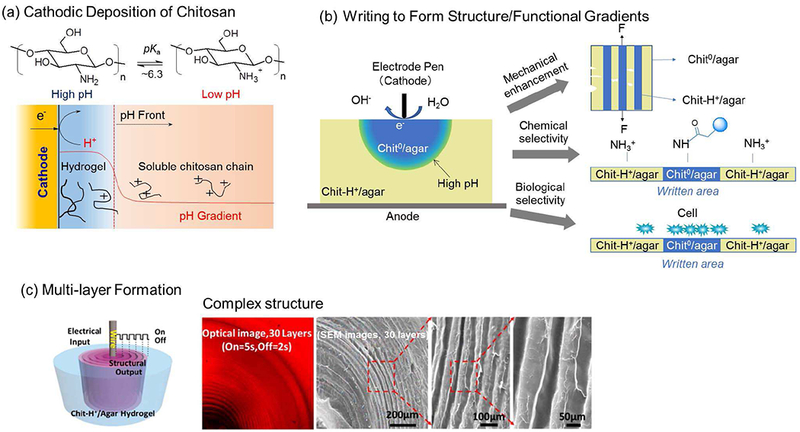Fig. 12.

Transduction of electrochemical inputs into biomacromolecular structural outputs. (a) The pH-responsive aminopolysaccharide chitosan responds to electrode-induced pH increases by undergoing reversible structural changes (i.e., by self-assembling into a hydrogel network). (b) Blending chitosan with a second polysaccharide, agarose, yields an “excitable” medium that can respond to surface imposed electrical inputs (i.e., writing by an electrode pen) and these structural changes also result in functional changes in mechanical, chemical and biological properties. (c). Chitosan gel with multi-layer structure can be created by an oscillating electrical on/off input. Reprinted with permission from[179]. Copyright (2016) American Chemical Society.
